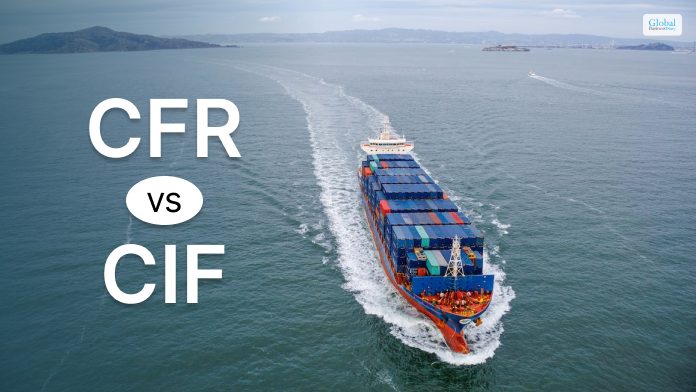What Is One Downside For Consumers To Competition In A Free-Enterprise System?

What is one downside for consumers to competition in a free-enterprise system? – A free-enterprise system is an economic system and is also known as a free market or capitalist system of economy. One of the major advantages of a free-enterprise system is that it helps in creating a competitive environment for entrepreneurs to perform in. The economy is made up of consumer spending, government purchases, and business investments.
In this article, you will learn about free-enterprise systems in the economy. You will also learn about how this system of economy works and how they are beneficial for businesses. Furthermore, you will also learn about the pros and cons of free-enterprise systems for businesses. Finally, we will discuss a downside for consumers that occurs due to competition in a free-enterprise system.
What Is A Free-Enterprise System?
According to Investopedia,
“Free enterprise, or the free market, refers to an economy where the market determines prices, products, and services rather than the government. Businesses and services are free of government control. Alternatively, free enterprise could refer to an ideological or legal system whereby commercial activities are primarily regulated through private measures.”
In a free-enterprise system of economy, the government of the country or a given territory does not regulate business activities. However, all businesses need to follow a defined set of legal rules for various aspects like property rights, competitive bidding, and contracts.
The philosophy of the free-enterprise system of economy believes that government interference in business and economy leads to problems in the growth of the economy. A free-enterprise legal system essentially leads to the formation of a capitalist economy.
The target here is to increase freedom of business, increased market efficiency, financial security and stability, consumer rights, and economic opportunities. However, there are also business risks associated with free-enterprise systems. This is due to high risks coming out of economic crises and government intervention.
How Does A Free Enterprise System Work?
The free-enterprise system works through the “laissez-faire” method.
According to Wall Street Mojo,
“A free enterprise offers the citizens the freedom to utilize their money as they wish and pursue job opportunities they want. Moreover, unlike the government-controlled systems, which limit people to start business opportunities, a free market enables multiple companies to compete with each other.”
It is also easy to run businesses like sole proprietorships, corporations, LLCs, etc. Basically, the central idea of the system operates on the basis of consumer demand. Since there is a demand for a product or a service among consumers, people will create a market so as to fill in the demand. Theoretically, households and consumers own most of the economic resources of a country, and not governments.
Due to the supremacy of the laws of supply and demand, businesses, suppliers, and distribution channels focus more on consumer demands. Based on different situations, business owners set the regulations for doing business.
What Is One Downside For Consumers To Competition In A Free-Enterprise System?
Consumer spending, business investments, and government purchases are the three most important parts of a free-enterprise system of economy. Each of these three parts plays a significant role in the economy.
Hence, you can see that consumers constitute a major part of a free-enterprise economy. This is because they represent the largest group in the economy and contribute significantly towards the economic growth of the nation.
According to Small Business Chron,
“Free enterprise economies allow consumers to make decisions according to their self interest. Consumers free to make their own decisions regarding economic purchases are a part of the economic theory known as the “invisible hand.” The invisible hand represents the free flow of economic resources based on the supply and demand between consumers and producers.”
Consumer spending indicates the overall consumer confidence in the current conditions of the market as well as the discretionary income of the consumer. The latter is the amount of money that consumers possess after payment for basic needs like food, clothing, and shelter.
Consumers rely on the limited involvement of the government in free-enterprise economies. Hence, governments should avoid making tight fiscal and monetary policies, as they can restrict the growth of consumer income. Apart from that, they can also limit the available consumer credit. These limit the resources available to consumers. Hence, such a situation forces consumers to save money rather than spend it.
Pros And Cons Of Free-Enterprise System For Businesses
The following are the major pros and cons of a free-enterprise system for businesses:
Pros Of Free-Enterprise System
Here are the pros of a free-enterprise system:
- There is less bureaucracy, and hence processes are more efficient.
- It is easy to start a business and less expensive to operate a business. Furthermore, there is greater flexibility for growth.
- Entrepreneurs in the economy get more freedom to operate the business on their own terms.
- In this system of economy, businesses prioritize consumer demand and preferences. Hence, consumers have a greater voice in the running of the economy.
Cons Of Of Free-Enterprise System
Here are the cons of a free-enterprise system:
- Businesses will not produce a product that is unprofitable, even though it is good.
- Due to the prioritization of profits, free enterprise can also spur unfavorable activity.
- There are restrictions to the distribution of goods.
- In situations where there are no bailouts, it can lead to greater market crashes.
Wrapping Up
What is one downside for consumers to competition in a free-enterprise system? – Hope this article was helpful for you in getting to learn better about the free-enterprise system of economy. You can see from this article that consumers face the downside of this system when the government tightens fiscal policies, as consumers limit their spending.
In this economic system, policies do not run the markets. Instead, the participants of the market set their pricing of products and services. Furthermore, there are limited export regulation requirements. Here, businesses have more freedom to choose their transaction. Do you have any opinion regarding this system? Share your opinion with us in the comments section below.
Read More Business Related Article By Clicking Below!!













